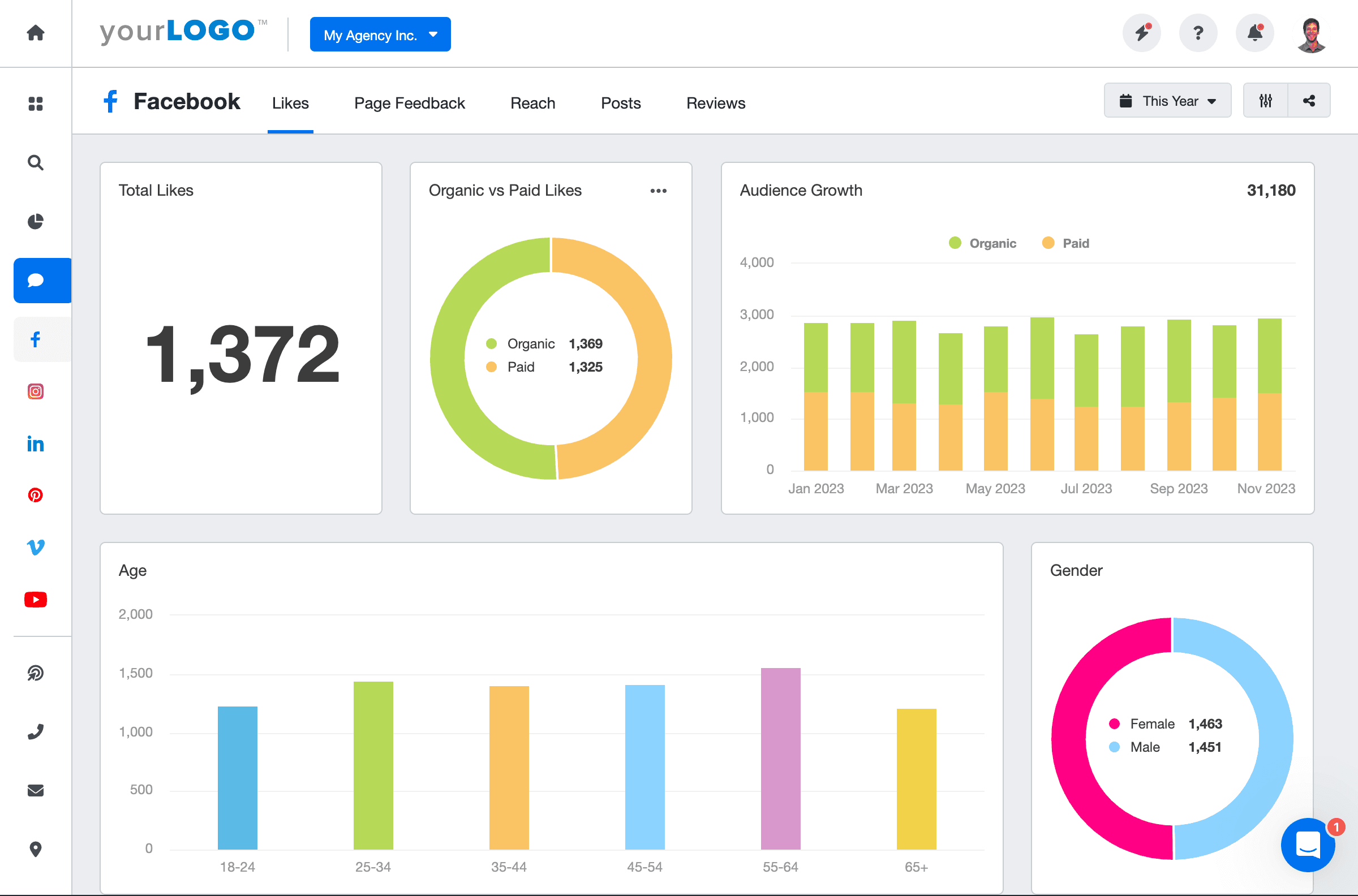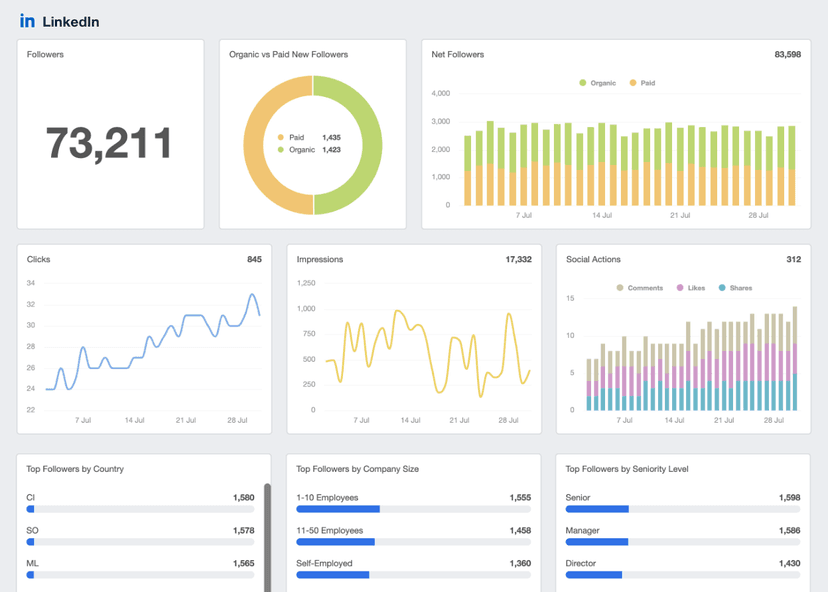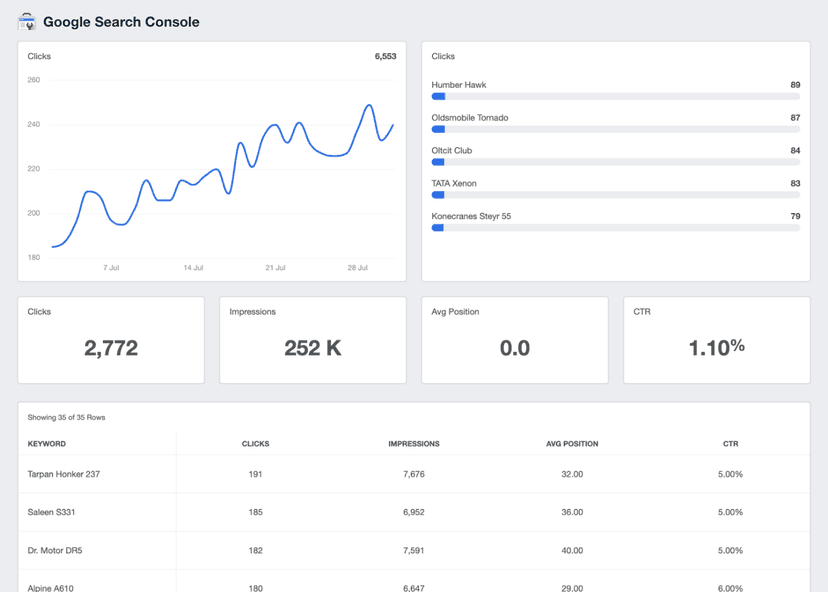Earned Media Value (EMV)
Competitive Benchmarking
Use EMV to see how a brand stacks up against the competition.
Quantifying Indirect Value
A tangible way to measure the intangible benefits of non-paid exposure.
Resource Allocation
Make more informed decisions on where to allocate resources.
Client Reports
A testament to the overall success of a campaign.
Why Earned Media Value is Important
Earned Media Value provides a monetary assessment of a brand's non-paid exposure. This metric is essential for understanding organic reach and brand sentiment. It's a crucial indicator of whether the public views a brand favorably and helps predict future growth.
EMV also serves a strategic purpose. It informs resource allocation by identifying which channels and campaigns are most effective in generating organic engagement. High EMV often correlates with brand awareness and customer loyalty, leading to increased revenue over time.
Tracking this metric provides actionable insights for optimizing marketing campaigns.
Stop Wasting Time on Manual Reports... Get Insights Faster With AgencyAnalytics
How Earned Media Value Complements Other KPIs
Earned Media Value works with other critical metrics like impressions, reach, keyword rankings, engagement, and click-through rates (CTR). A high EMV usually suggests that content is resonating, which often translates to better engagement and more clicks. It's a direct line to understanding campaign success.
EMV also ties into Return on Investment (ROI), especially when evaluating the efficiency of paid campaigns. A robust EMV often leads to a more favorable ROI by increasing organic reach and reducing acquisition costs. Monitoring EMV alongside these other metrics generates a clearer, more actionable view of campaign performance.
The Evolution of Earned Media Value in the Digital Era
Initially, EMV was focused on traditional media mentions, but the advent of social media platforms shifted the paradigm. This digital transition marked a significant change in marketing efforts, emphasizing the value of organic shares, mentions, and engagement instead of purely looking at paid advertising on social platforms. Today, a successful social media campaign hinges not just on content, but on how effectively it can generate earned media.
The incorporation of an influencer marketing strategy into the marketing toolbox further revolutionized EMV. Leveraging personalities with substantial followings on platforms like Instagram and YouTube, has become a cornerstone in efforts to generate earned media. The synergy between influencer marketing and the other elements of an earned media strategy underscores the shift towards valuing authentic, user-generated content over traditional advertising methods.
KPIs are just an extension of us living out our core values. KPIs keep us accountable. KPIs provide the client transparency into what work we deliver and, most importantly... KPIs demonstrate that we are on track and achieving mutually agreed upon goals - this is our agency’s true north “results for clients.”
How To Calculate Earned Media Value
The formula for calculating Earned Media Value varies depending on the specific metrics a brand chooses to focus on. Still, it often revolves around assigning a dollar value to overall impressions or different types of engagements.
This could mean assigning values to likes, shares, comments, and even the reach or impressions a piece of content garners. Each type of engagement has its own weight. Likes indicate general approval, while shares and comments often suggest a deeper level of engagement. Impressions give the agency a sense of reach but don't necessarily indicate interaction. Choose the types of engagements that align with the brand's goals.
These dollar values are set based on the estimated impact every kind of engagement has on brand awareness, customer acquisition, or other goals. After assigning values to each engagement type, multiply these by the number of engagements received for each type. Determine the sum to get the total EMV for a specific post or campaign. Keep in mind these values aren't set in stone. Adjust them based on the current impact and objectives of the campaign for the most accurate results.
Earned Media Formula Example
What Is a Good Average Earned Media Value?
An excellent average EMV is often several times higher than the amount spent on paid media in the same campaign. For instance, if $1,000 is spent on paid social posts, an EMV of $4,000 or higher is generally considered successful, indicating the campaign has a high organic impact.
What Is a Bad Average Earned Media Value?
A bad EMV would be low, especially one near or below the paid media spend. If $1,000 is invested in paid promotions and the EMV is only $1,200, it's time to rethink the strategy. This suggests low organic reach and little consumer interest in the content.
Why Earned Media Value Matters to Clients
For clients, Earned Media Value is a key metric that closely aligns with their broader business objectives.
It serves as a tangible indicator of brand buzz and a sign that the brand is resonating in the market, potentially leading to higher customer retention rates and even increased sales.
A high EMV signifies that the public sees the brand and actively engages with it. It acts like a pulse check on a campaign's resonance with consumers, offering a quick, digestible metric that translates to brand health.
This kind of clarity is not just comforting; it's actionable. Clients use these insights to reallocate resources or adjust their strategy to keep that EMV climbing, ensuring that their marketing objectives are not just met, but exceeded.
Why Earned Media Value Matters to Agencies
For agencies, Earned Media Value is more than just a badge of creative honor; it is a critical performance indicator that makes or breaks client relationships.
A rising EMV demonstrates the efficacy of an agency's creative and strategic efforts and speaks volumes about its ability to drive real business results. It essentially offers an objective measure of how well the agency's storytelling and targeting resonate with the intended audience.
Additionally, leveraging a strong EMV secures future projects and enhances the agency's reputation for delivering high ROI.
It's not just about validating the creative team’s brilliance but providing concrete evidence that the agency's approach is hitting the mark. By keeping an eye on EMV, agencies get a snapshot of their work's quality and impact, enabling them to make data-driven decisions that keep clients happy and engaged.
The Complexities of Measuring EMV
Measuring Earned Media Value presents unique challenges due to its inherent subjectivity. Assigning a monetary value to social media posts and user interactions is not straightforward. Unlike paid media efforts or owned media, where costs and returns are clearer, EMV relies on estimating the value of organic engagement, which can vary significantly between brands and campaigns.
Another challenge when trying to accurately measure earned media is isolating the impact of earned media performance from other marketing efforts. It's difficult to determine whether a spike in engagement or brand popularity is solely due to effective organic strategies or if it's influenced by concurrent paid or owned media activities. This overlap can muddy the waters, complicating efforts to quantify the true impact of EMV in terms of marketing dollars.
While EMV is a valuable metric, it requires careful consideration and a nuanced approach to measurement.
Win Back Billable Hours by Automating Your Client Reporting
Making Sense of Earned Media Value for Smarter Campaigns
Understanding Earned Media Value through multiple lenses is crucial. A thorough analysis not only validates past actions but also informs future strategies. In short, dissecting EMV yields better bang for the advertising buck.
Analyze Earned Media Value Over Time
Look at EMV on a timeline to identify patterns. Seasonal spikes or unexpected dips provide vital information for future planning. Essentially, time-based analysis highlights what works and when it works best.
Evaluate Earned Media Value Across Channels
Compare EMV metrics from different platforms like Facebook, Instagram, and Twitter. This helps determine which channels are most cost-effective and influential in generating organic engagement.
Uncover Trends and Anomalies in Earned Media Value
Always watch for outliers. An unusually high or low EMV may indicate external factors like viral moments or competitor activity. These outliers offer unique lessons and influence strategy adjustments.
Put Earned Media Value in Context
Context is key. Reporting EMV in isolation is akin to showing a movie still instead of the whole film. Align EMV with related KPIs like engagement rates or ROI to give clients a full view of campaign health.
Visualize Earned Media Value Performance
Humans are visual creatures, and a picture is worth a thousand words—or, in this case, dollars. Utilize charts or graphs to make EMV data visually digestible, helping clients instantly grasp performance levels.
Align Earned Media Value to Client Goals
Every client is goal-oriented. Demonstrating how EMV pushes the needle toward those goals provides more proof of agency value. Align EMV metrics directly with client objectives to make the impact crystal clear.
FAQs About Earned Media Value (EMV) and Earned Media Campaigns
Still wondering how earned media drives real value? These FAQs explain how EMV compares to paid metrics, how to measure exposure across social media or press coverage, and why these authentic impressions build brand credibility more powerfully than ad campaigns.
Earned media delivers increased brand awareness, brand credibility, and performance without adding to your advertising budget. It builds trust through third-party content like reviews, press coverage, or influencer endorsements. The downside? It’s unpredictable. You can’t fully control message timing, tone, or reach, and results often rely on consistent content creation and strong communication channels.
EMV reflects the value generated through attention gained without direct cost—often across third-party sites or influencer campaigns. It measures the dollar amount equivalent of exposure from unpaid sources like news articles, social mentions, or word-of-mouth recommendations. Although often used to calculate earned media value, CPM is more commonly used as a bidding strategy which calculates advertising costs per thousand impressions.
Typical examples include:
News articles and press coverage from media outlets
Mentions or reposts on social channels
Online reviews and third-party posts
Influencer endorsements or creator economy features
Organic search activity
Earned media content is often used to drive brand credibility and increase brand awareness at minimal cost. It delivers authentic voice through third‑party mentions and online reviews that often is typically more authentic than paid campaigns. Tracking EMV provides meaningful performance metrics by quantifying the reach and impact of non-paid media impressions.
Campaigns that result in third-party content or influencer endorsements give weight to your client’s brand, boosting perception of authenticity and trust. Positive press coverage, online reviews, or social mentions create meaningful connections with potential customers—beyond what advertising alone can achieve.
Absolutely. Earned media campaign ROI can be calculated by applying EMV formulas—like EMV impressions × CPM rate—to social media content or influencer endorsements. This approach quantifies the value of organic engagement in a way that complements paid social ads and integrates smoothly with your broader social media marketing strategy.
Adjustment factors help fine-tune EMV to reflect campaign objectives, content quality, and context—whether that content appears on news outlets, third-party sites, or social media channels. These modifiers ensure that the calculated dollar amount reflects differences in media impressions, the brand’s image, or the quality of earned media content.
Because earned media’s power lies in audience trust—content earned through relationships or positive sentiment often receives more attention than paid placements. Earned media creates authentic exposure across third-party mentions and social channels, enhancing customer connections with a real voice and delivering stronger engagement metrics than many paid tactics.
Facebook Dashboard Example

Related Integrations
How To Increase Earned Media Value
Looking to up the ante on Earned Media Value? These three tips are the playbook for improvement, each offering a unique avenue for optimization.
Improve Content Quality
Quality content engages the audience and encourages sharing. A higher share rate directly correlates with a spike in Earned Media Value.
Time Posts Wisely
Post content when the target audience is most active. Analytics tools help identify these key time slots, aligning them with higher engagement and, in turn, a higher Earned Media Value.
Promote User-Generated Content
Creating campaigns that encourage users to produce and share content engages the community and builds Earned Media Value through organic reach.
Related Blog Posts
See how 7,000+ marketing agencies help clients win
Free 14-day trial. No credit card required.
















